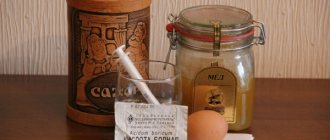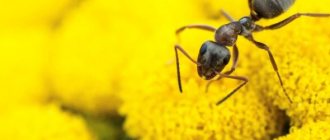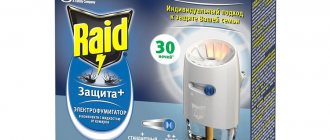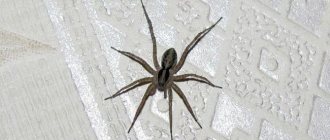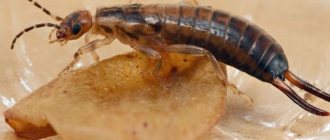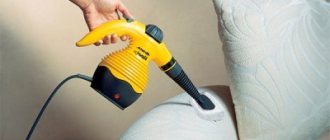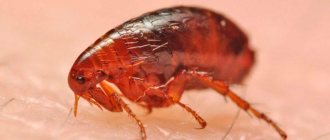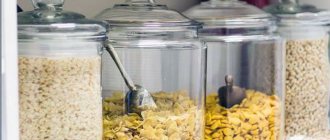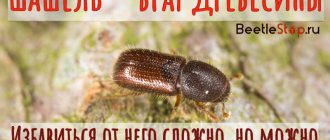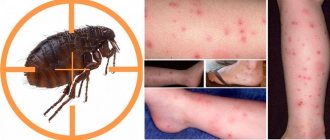There are many different types of flies and flies that can be found in your home, including sewer flies and fruit flies. But it is quite difficult to distinguish them correctly. To do this, you need to know the characteristics of the habitat of each type of fly. Fruit flies fly near food, juices, sweets and fermented, spoiled fruit. At the same time, sewer (drain) flies love garbage, pipes and damp places. They live near kitchen sinks, in bathrooms, sewer pipes, and in damp soil. These flies can accidentally enter the human body along with inhaled air and cause harm. You definitely need to get rid of them!
And we are ready to arm you! Believe me, if you learn more about the behavior of these insects and choose the right methods of prevention and destruction of flies, they will leave your home very soon!
What do sewer flies look like?
They are small (<2mm) black flies with short, hairy bodies and wings, giving them a “fluffy” moth-like appearance. Adults have long antennae and leaf-shaped wings. You can recognize drain flies not so much by their color and size as by their behavior. These flies are active in the evening, but during the day they are not active and sit somewhere on the walls.
These flies are poor flies, so they mostly stay indoors, crawling and only occasionally flying. And they don’t live long – about 2 weeks. The life cycle of drain flies contains several stages. The larvae and pupal stages of these flies live in thin films in drainpipes and septic tanks. The larvae feed on microscopic plants and decaying organic matter. The duration of the larval stage is about 9 to 15 days, and the pupal stage lasts for 20-40 hours. Adult flies that emerge from the pupae are considered fully mature and begin to reproduce rapidly, laying 30 to 100 eggs at a time.
Why are sewer flies dangerous?
- They infect you through your food. Drain flies love to sit on your sandwiches and jam, especially if the kitchen counter is next to the sink. At this time, there is a lot of infection on their paws, picked up in the decomposition zone. From pieces of dirt to very dangerous bacteria.
- Sewer flies in the bathroom are dangerous for children. You should not bathe your baby near a breeding ground for drain flies. They can fly into his eye, mouth... and in general, this is a dangerous neighborhood.
- They bring their friends to you. Sewer flies and their babies are also a breeding ground. But for larger insects. Following them, spiders, larger flies and other creatures may appear in your house.
- Allergy. These are, of course, not bees or wasps, but medicine knows cases of acute allergic reaction to sewer flies.
How to protect your home from fly infestation?
To understand where sewer flies come from, you need to know what attracts them.
This list includes: trash cans, clogged, dirty drains in sinks and bathrooms, stagnant water in any place, as well as potted flowers indoors - flies love wet soil. In general, the prevention method is very simple: you need to regularly clean all the sinks and drains in your home. Inspect all drains in the home and any areas inside or outside the home where there is standing water. The optimal regime for preventive cleaning of sewer pipes is once a month, especially if your home and the sewer system in it have been in service for many years.
Description of the insect
The butterfly appeared during the Jurassic period, when there were no sewers yet. At the same time, the insect managed to survive and adapt to modern life. There are 2,500 species of butterflies in the world.
An adult sewer fly reaches 3 mm. Most of the body and wings are covered with dense hairs resembling fluff. The chest and back of the insect are dark gray. The wings shimmer with all the colors of the rainbow.
Important: the color of an insect can differ radically, as it depends on the region where it lives.
The life cycle of a sewer fly goes through 4 phases:
- egg;
- larva;
- chrysalis;
- imago.
The adult lays eggs in places with high humidity. Their number can reach 100 pieces. The eggs are light brown or yellowish.
The larva is born after 2-3 days. Her body is worm-like. Reaches 7 mm. The insect feeds on the remains of organic decomposition.
The pupation process begins on the 21st day of life. The adult appears after 12-15 days.
Habitat, nutrition, reproduction
Insects love dampness.
In nature, they live in damp forests or swampy areas. In human homes, they find refuge near the sewer system, under basement canopies or in damp rooms without heating. Females lay eggs in manure or compost heaps, the remains of rotting vegetation. The larvae hatch from the eggs on day 7 and turn into tiny midges in 1-3 weeks.
Adults feed on nectar and pollen. The larvae eat rotting vegetation. Insects live in large colonies, so detecting their invasion is easy.
Reasons for appearance
The main reasons for the appearance of the pest are excessive humidity and dampness. A favorable environment for the life of sewer flies is:
- kitchen (sink);
- bathroom;
- basement or attic space;
- non-functional ventilation soaked in moisture.
Important: moving around the apartment, butterflies spread dampness.
Even if the apartment is clean and has moderate humidity, insects can still appear. When a butterfly infests a neighbor's house, it spreads through the sewer pipes throughout the multi-story building.
How is the fruit midge different from other types of midges?
For some people, there are no different types of midges, since they understand midges as some general concept associated with insects of quite small sizes. The fruit midge mainly chooses fruits and berries for its life activity.
In appearance, they can be distinguished from other midges by a number of characteristics:
- The Drosophila midge is not large in size, only from 1 to 3 mm.
- She has an oval, slightly oblong body.
- It does not fly fast and is distinguished by its “drunk” flight.
- It has 2 wings placed symmetrically and 6-8 legs.
- The color of the insect ranges from brown, yellow to orange or black.
These small insects lay eggs exclusively on the surface of fruits, berries and vegetables. As a result of the appearance of rot, the eggs turn into adult midges, since this is a breeding ground for them.
There is no direct threat to humans from midges, but they unbalance a person by flying into the nose, mouth, ears, etc.
In any case, the very presence of midges in a living room is a fact indicating that something is not being done well and it is better to reconsider all your life activities by analyzing the reasons for the appearance of insects. As a rule, it is people themselves who are to blame for the appearance of pests or parasites in their homes.
Even individual little things contribute to the natural course of events. Therefore, you need to abandon the practice of constantly keeping fruits and berries in a vase on the table.
Maybe it’s beautiful, or maybe it indicates prosperity, but the fact that it attracts midges like a magnet is a fact. And a number of little things that are worth paying attention to: some owners do not wash the dishes immediately after eating, leaving them in the sink “for later.” As a result, numerous flocks of midges gather near unwashed dishes: after all, there is something to profit from.
And this is even the case when the house is kept in perfect order.
Getting rid of midges is quite a troublesome task. It’s easier to get rid of some negative practices. Basic rules for keeping your home clean can protect your apartment or house from the invasion of various types of insects.
Benefits and harms
Unlike other flies, the butterfly does not feed on blood and does not attack humans. The only danger is the spread of bacteria carried on the paws. A fly can land on food, infecting it with viruses or helminths.
The butterfly is food for large flies and spiders. Therefore, when a pest appears, a “menagerie” of insects will appear in the apartment. To avoid ending up in the hospital with an infection, it is necessary to get rid of sewer pests in a timely manner.
Despite the harm they cause, butterflies also bring benefits. Their larvae feed on sediment accumulated in sewer pipes and drains.
What are fruit flies afraid of?
Fruit midges are repelled by the smell of bay oil, kerosene, turpentine and horseradish. It is enough to add 1 tablespoon of liquid to a container of clean water or spread out the leaves and pieces of horseradish root so that there are fewer fruit flies.
You can make a trap with your own hands from a glass jar, cling film and bait.
You can put in the jar:
- darkened banana or banana peel;
- apple or pear;
- watermelon rind.
Cover the jar with film and make several large holes with a thick needle. If there are a lot of midges, you will have to set up several homemade traps or buy special midge traps in the store in the apartment.
Ways to control insects
The appearance of flies, even if they are not dangerous, can lead to serious consequences. To prevent this from happening, you should use one of the ways to deal with them:
- chemical;
- folk
Regardless of the method chosen, the result will be positive.
Chemicals
The most effective way to combat flies, including butterflies, is the use of chemicals. They can be purchased at any household chemical store. There are a huge number of drugs. Some cope with their task completely, others partially. The best chemicals include:
- "Raptor";
- "Raid";
- "Combat";
- "Destructive force".
After treating the insects, it is necessary to treat the sewer pipes with ammonium salt.
Important: before using chemicals, you must read the instructions for use.
Folk remedies
The use of chemicals can have negative effects on pets and family members. Therefore, many people use folk methods of struggle. To get rid of sewer flies, you need to:
- wipe the walls, floor and all surfaces with a solution of table vinegar (150 grams per 10 liters of water);
- place tangerine, orange or lemon peels in the bathroom;
- treat any surfaces, including floors, with baking soda;
- dilute laundry soap in warm water, and then wipe the bathtub, sink and walls in the kitchen with the solution.
Important: folk methods are effective if insects have just appeared in the apartment.
How to get rid of sewer flies: a review of the best traps and chemicals
Where is the best place to install fly traps?
Most often they need to be placed at the site of infection. Near a garbage dump, a low-lying drain, somewhere next to the sink. It is clear that there is no need to place it in the sink itself - the flies will fly into the trap for food anyway.
BEAPCO 6-Pack Drop-Ins Fruit Fly Traps
This trap is designed for fruit flies, but, judging by user reviews, it is also perfect for their sewer “sisters”. A set of 6 traps costs only $14.99 - a very reasonable price. Manufacturers assure that one such set will protect your home for 180 days - i.e. one trap should be enough for exactly a month.
Inside small plastic containers there is a mixture that is non-toxic to humans - something like apple cider vinegar. The device is designed in such a way that the bait will not leak out of it even if it falls or breaks. The description says that BEAPCO catches 2 times more flies than competitors.
Users note the ease of installation, the high efficiency of the trap and the fact that it even catches beetles and mosquitoes. One man even swore in the comments that his BEAPCO caught a couple of hundred midges overnight! True, some buyers complain about the quality of the plastic: they say it breaks if you step on it or drop it on the floor, which, however, is logical: this is not a mixture of titanium and platinum...
TERRO Fruit Fly Trap T2500
In second place in the user rating of traps is TERRO Fruit Fly Trap T2500. This device looks very cool: in shape and color, the product imitates a ripe apple. This is understandable: the developers of TERRO created it, first of all, to catch fruit flies. But we remember that sewer flies also love sweet nectar and juice. Therefore, they also “buy” the appearance of the bait.
The Trojan apple is more expensive – $6.97 per piece. Apparently, the premium is just for the unique patented design. In all other respects, this trap is similar to the previous sample. One package is valid for a month, it contains a non-toxic mixture, and Terro can catch hundreds of flies.
As for the advice of experienced buyers, they recommend placing the trap under the sink and closer to the trash can. True, parents of small children need to explain to the child what an “apple” is and should never be touched or bitten. It looks really delicious.
Invade Bio Drain Gel
The most popular option among all analogues is Invade Bio Drain Gel. Depending on the volume, it will cost from $8 for 1 quart to $155 for 4 gallons. We recommend purchasing a gallon of product at once for $45.25: this volume is enough for a protracted war with sewer flies.
This product should be used in one method: pour into the drain (4-5 ounces will be enough for one time, although it is better to read the official instructions). It does not contain aggressive or dangerous chemicals, but we still recommend avoiding unnecessary contact with the human skin and body, so it is better to use protective gloves. The basis of the liquid is citrus oil (yes, the smell from the product is very pleasant) and some “natural microbes” that destroy everything in their path: organic matter, scale, excess odors...
The result is that the flies are left without a nutrient mixture for their larvae. Most users notice a “killer” effect after the first use of Invade Bio Drain Gel. True, re-filling the sink is still mandatory: they are recommended by the manufacturer himself. One way or another, on average, after the complete destruction of insects, most commentators were left with an almost full bottle of the product. Economical after all.
Among hundreds of positive reviews, we also found a couple of entries about the complete ineffectiveness of the product. It seems that their authors simply confused sewer flies with fruit flies. And looking for a den of fruit flies in the sink is very short-sighted...
Drain Gel
Probably the main competitor of the previous Bio-gel is Drain Gel. A gallon of this product costs $35.65, a quart – $15.49. In general, the prices are almost comparable.
It also breaks down organic matter inside sewer systems, providing a healthy environment inside pipes and drains, penetrating even the smallest cracks and bends. The product affects both flies and insects. It does not have such a wonderful orange aroma, but it effectively destroys bad odors.
Users note the economical consumption of the gel. It kills flies in just two uses, despite the fact that the recommended “fill” dose is 1-2 ounces. Many of the buyers are hooked on Drain Gel as a preventive measure. People write that cleaning the sink monthly with its help prevents the possibility of a “fly relapse.”
Overall, this product is very similar to the previous gel and saves $10 per gallon compared to the cost of a gallon of InVade Bio Drain.
Prevention
It is not difficult to fight sewer fly, but it is better to prevent its appearance. To do this you need:
- ventilate the apartment;
- remove dirty dishes from the sink;
- clean sewer pipes;
- get rid of high humidity in the bathroom.
If insects do appear and you cannot cope on your own, it is recommended to seek qualified help. Sanitary and epidemiological services are eliminating the annoying insect.
How to remove fruit gnats from the kitchen
First of all, you need to find the source of their appearance, otherwise all efforts will be wasted. It could be:
- A forgotten piece of apple.
- Clogged sink.
- Vegetables starting to rot.
- A bucket with traces of fermented fruit pulp left on it.
- A wine or beer bottle left unwashed.
It’s not for nothing that they are called not only fruit flies, but also wine flies, because they were a real scourge of winemakers and beer bar owners.
If such a source is discovered, try to get rid of it immediately. Fermented fruits should be immediately thrown into the trash, plumbing fixtures should be cleared of blockages, and bottles should be thrown away.
If the wine container is so precious as a memory of some important event, or you decide to keep it to show off to your friends, then wash it with hot water, preferably with bleach or bleach.
